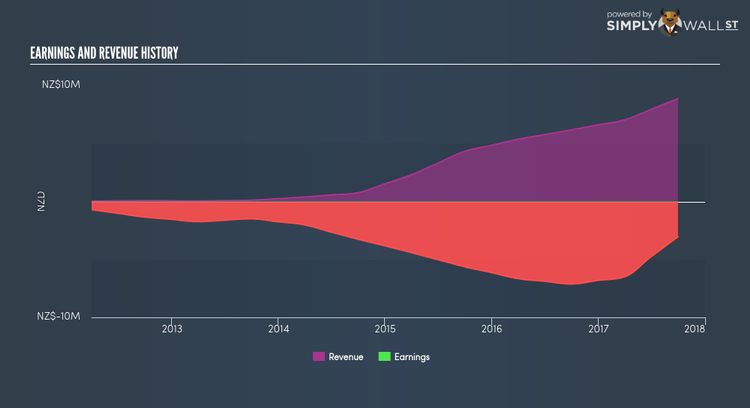Was Plexure Group Limited’s (NZE:PLX) Earnings Growth Better Than The Industry’s?

For long term investors, improvement in profitability and outperformance against the industry can be important characteristics in a stock. In this article, I will take a look at Plexure Group Limited’s (NZSE:PLX) track record on a high level, to give you some insight into how the company has been performing against its historical trend and its industry peers. Check out our latest analysis for Plexure Group
Could PLX beat the long-term trend and outperform its industry?
I use the ‘latest twelve-month’ data, which either annualizes the most recent 6-month earnings update, or in some cases, the most recent annual report is already the latest available financial data. This method enables me to assess many different companies on a more comparable basis, using new information. For Plexure Group, its latest trailing-twelve-month earnings is -NZ$3.03M, which, against the prior year’s level, has become less negative. Given that these values are somewhat short-term, I’ve determined an annualized five-year value for PLX’s net income, which stands at -NZ$3.73M. This suggests that, despite the fact that net income is negative, it has become less negative over the years.
We can further evaluate Plexure Group’s loss by looking at what the industry has been experiencing over the past few years. Each year, for the past five years Plexure Group’s top-line has grown by 59.00% on average, signalling that the company is in a high-growth phase with expenses racing ahead revenues, leading to annual losses. Looking at growth from a sector-level, the NZ media industry has been growing its average earnings by double-digit 19.09% in the previous twelve months, and a more muted 9.02% over the past half a decade. This means that, even though Plexure Group is currently loss-making, it may have been aided by industry tailwinds, moving earnings in the right direction.
What does this mean?
While past data is useful, it doesn’t tell the whole story. Companies that incur net loss is always difficult to predict what will happen in the future and when. The most insightful step is to assess company-specific issues Plexure Group may be facing and whether management guidance has steadily been met in the past. You should continue to research Plexure Group to get a better picture of the stock by looking at:
Financial Health: Is PLX’s operations financially sustainable? Balance sheets can be hard to analyze, which is why we’ve done it for you. Check out our financial health checks here.
Other High-Performing Stocks: Are there other stocks that provide better prospects with proven track records? Explore our free list of these great stocks here.
NB: Figures in this article are calculated using data from the trailing twelve months from 30 September 2017. This may not be consistent with full year annual report figures.
To help readers see pass the short term volatility of the financial market, we aim to bring you a long-term focused research analysis purely driven by fundamental data. Note that our analysis does not factor in the latest price sensitive company announcements.
The author is an independent contributor and at the time of publication had no position in the stocks mentioned.

 Yahoo Finance
Yahoo Finance 
